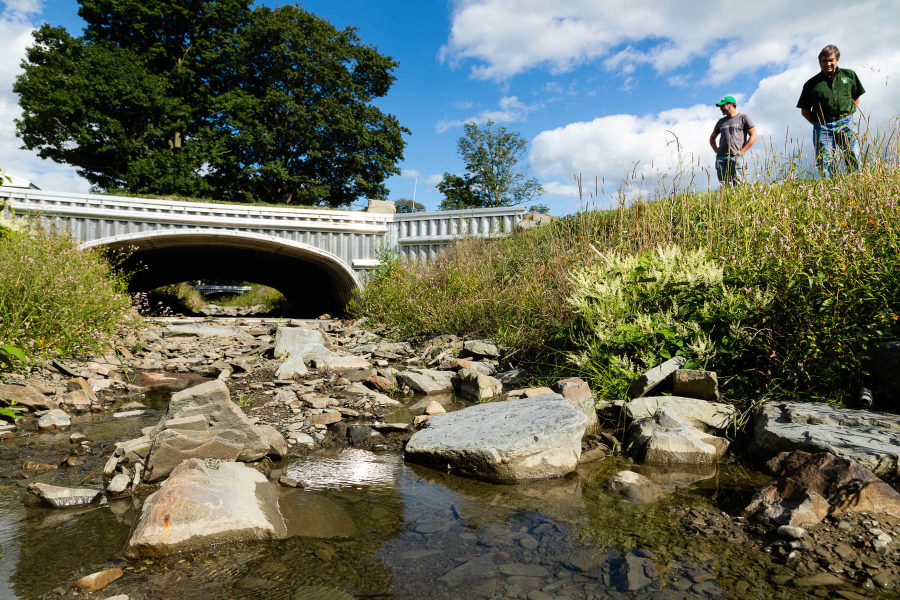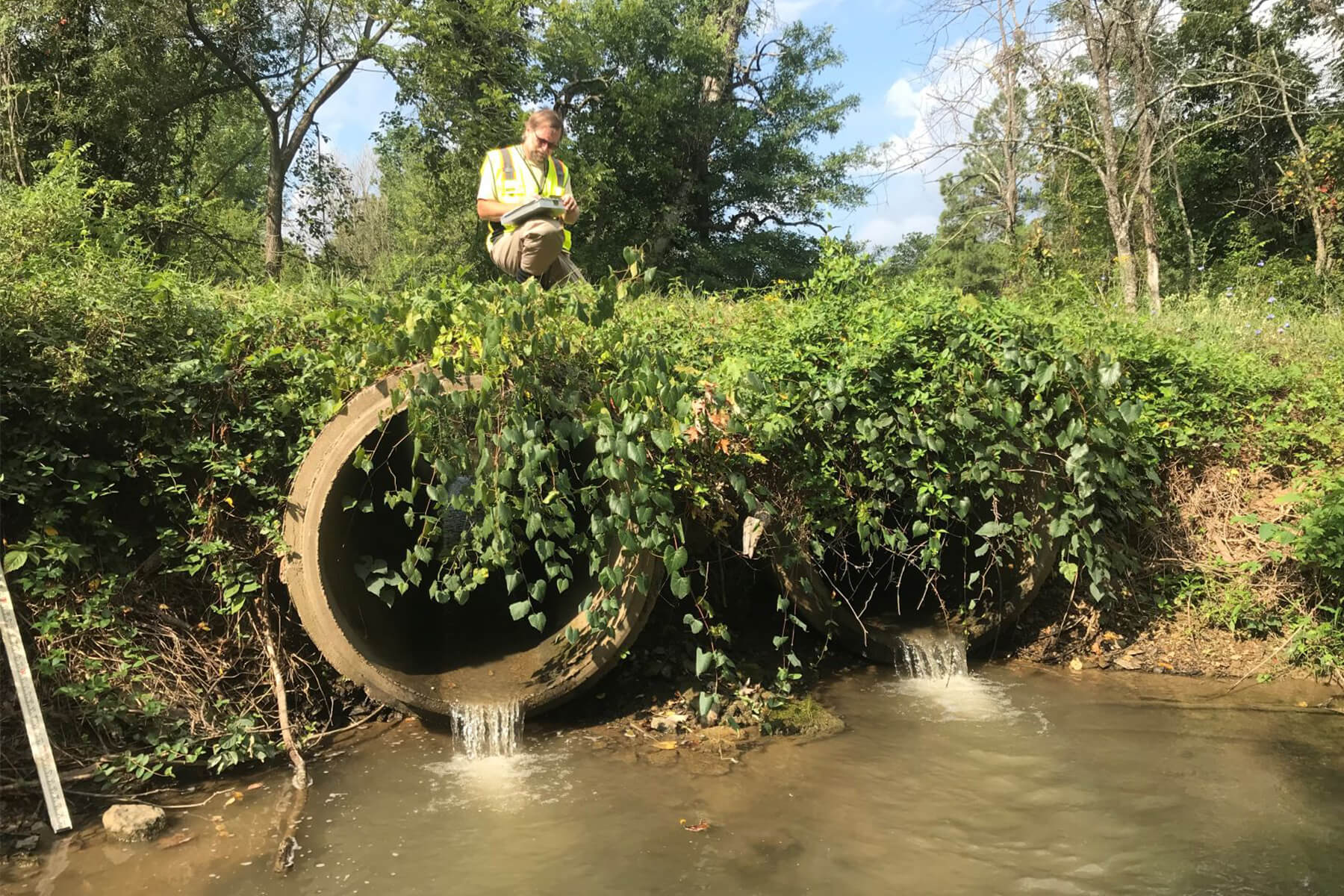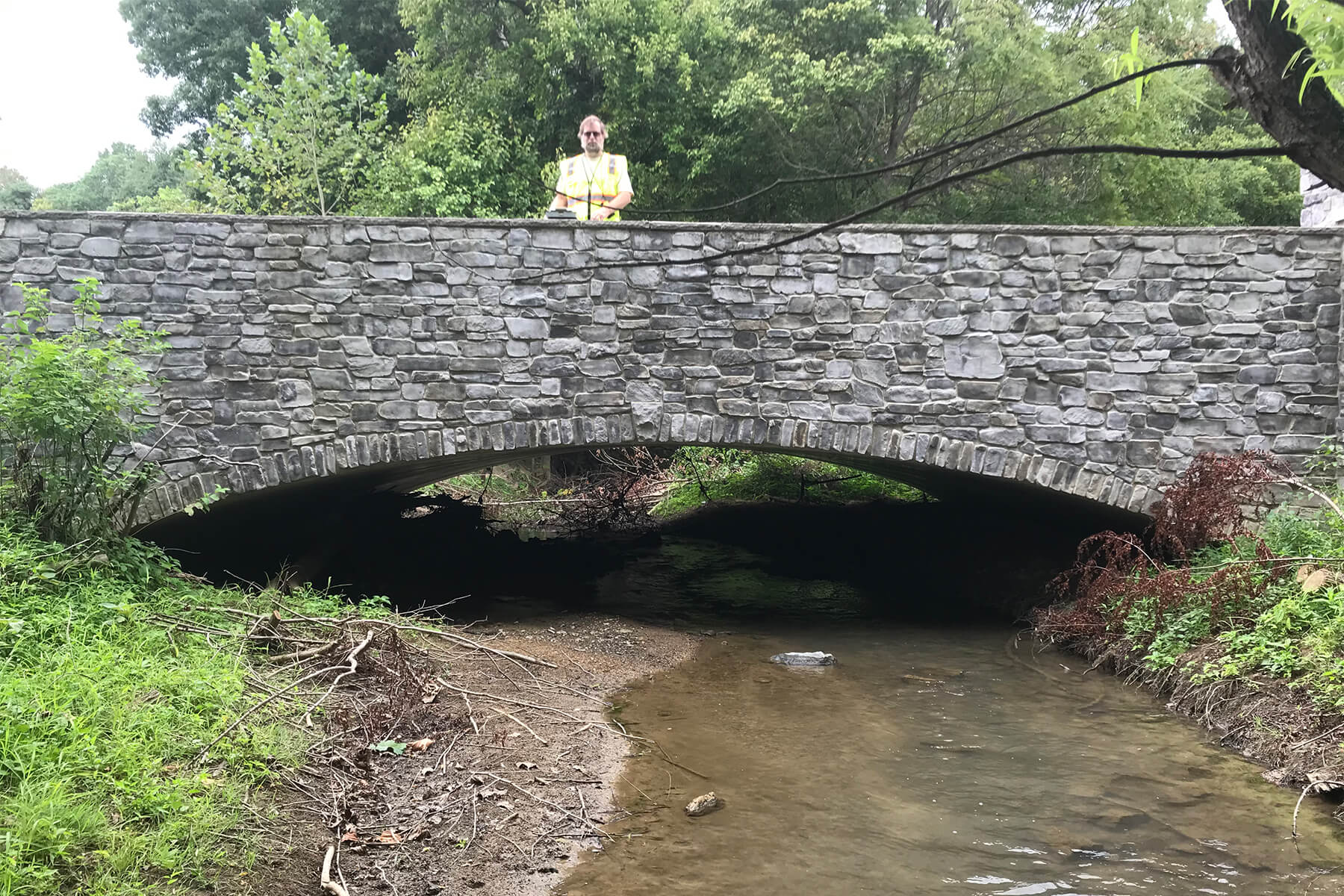Removing fish blockages goes hand-in-hand with sediment reduction

When John Denver sang about West Virginia and its country roads, he might not have had the health of migratory fish in mind.
There are over 37,000 miles of roads in the state and at countless points they intersect with rivers and streams. This requires some sort of crossing, like a bridge, ford or a culvert: a tunnel-like structure that allows water to pass through. But the impact that these crossings have on wildlife runs the gamut, from a mere annoyance to blocking some species from reaching the other side of a stream entirely.
Fish like brook trout, American eel and white sucker, as well as reptiles like box turtles, use streams to migrate. Blockages in the water can keep them from reaching spawning grounds, accessing food and escaping predation.
“In general, it’s not good to decrease passability or connectivity within a watershed,” said Zach Norris, project manager at the Cacapon Institute (CI), a nonprofit that works to improve water quality in Appalachian watersheds.
The problem is evident in West Virginia’s Opequon watershed, where CI recently completed an assessment on stream crossings. Situated along the I-81 corridor, the watershed has seen leaps of development in the past decade that have led to a slew of new roads and new crossings, with only more to come.

The watershed is also a focus point for pollution reduction in the state. The Opequon is a direct tributary of the Potomac River, which flows into the Chesapeake Bay and drains throughout most of Berkeley County and roughly half of Jefferson County. Over the years, West Virginia has put a lot of emphasis on improving this particular watershed in their Watershed Implementation Plans (WIPs)—a document that includes specific steps that states will take to meet the goals of the Chesapeake Bay Total Maximum Daily Load, or Bay TMDL.
“The reason the Opequon is so high on West Virginia’s list of WIP implementations is it is along the I-81 corridor,” said Alana Hartman, the Potomac Basin coordinator at West Virginia’s Department of Environmental Protection (WVDEP).
Certain stream crossings not only obstruct wildlife migration but can also erode the banks and release excess sediment, which smothers underwater grasses. For example, culverts that are too small can shoot fast-moving water downstream when it rains (picture the excess force generated when you put a thumb over part of a hose and tighten the outlet). The force of the water can cause “scour pools,” carving out indentations in the creek bed at the base of a culvert.
“Inevitably as that scour pool grows, the sediment taken has to be taken downstream,” Norris said.
CI set out to assess stream crossings in the Opequon to determine which ones have the worst effect on both fish migration and sediment transport. The study was funded by an Environment Protection Agency grant delivered through the Chesapeake Bay Trust, with the goal of supporting the Chesapeake Bay Program’s restoration work. CI worked closely with the Bay Program’s Stream Health Workgroup and Hartman, who represented West Virginia.
"guilty culprits include a ford with a five-foot drop that fish would have to somehow scale on their way upstream, a double-sided culvert that blasts the stream with heavy flows of water during storms and a particularly creative culvert that a private landowner made out of a car tire."
The team at CI narrowed their study to focus on two subwatersheds of the Opequon: Tuscarora Creek and Mill Creek. Using a dataset from the North Atlantic Connectivity Collaborative (NAACC), they verified steam crossing sites and then sent a team to take measurements and pictures for each crossing. The team then entered this data into a NAACC database that provides an Aquatic Passability Score.

Seventy-five stream crossing structures were found in the two watersheds. Of those, 18 were identified as having a moderate to severe impact on fish passage, and 26 produced a scour pool. By combining these findings, the team reported seven crossings that have that greatest impact on both fish passage and sediment buildup. These guilty culprits include a ford with a five-foot drop that fish would have to somehow scale on their way upstream, a double-sided culvert that blasts the stream with heavy flows of water during storms and a particularly creative culvert that a private landowner made out of a car tire.
“I look at culverts in a completely different way now,” Norris said, explaining the variety of crossings that can exist and their effect on stream health.
CI is also assessing sites in Bloomery Run, Waites Run and Warm Springs Run. The data is entered into the NAACC database, which allows other nonprofits and local planners to access and act on the knowledge.
According to Hartman, the fact that the team identified crossings with both fish passage and sediment pollution issues makes it likely that they will get funding to redesign and replace them. In West Virginia, culverts on public roads are installed by the Division of Highways (DOH). Hartman and Norris connected with DOH during this project and look forward to collaborating in order to address the pressures of increasing development in the region.
“Suburban sprawl continues along the I-81 corridor in West Virginia,” said Norris. “And more and more culverts are going to go in.”

Comments
There are no comments.
Thank you!
Your comment has been received. Before it can be published, the comment will be reviewed by our team to ensure it adheres with our rules of engagement.
Back to recent stories